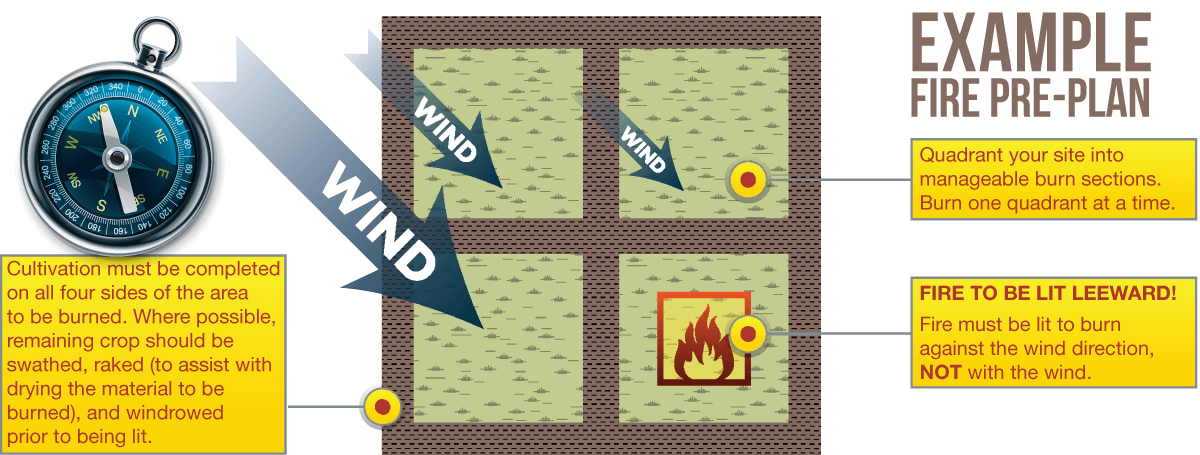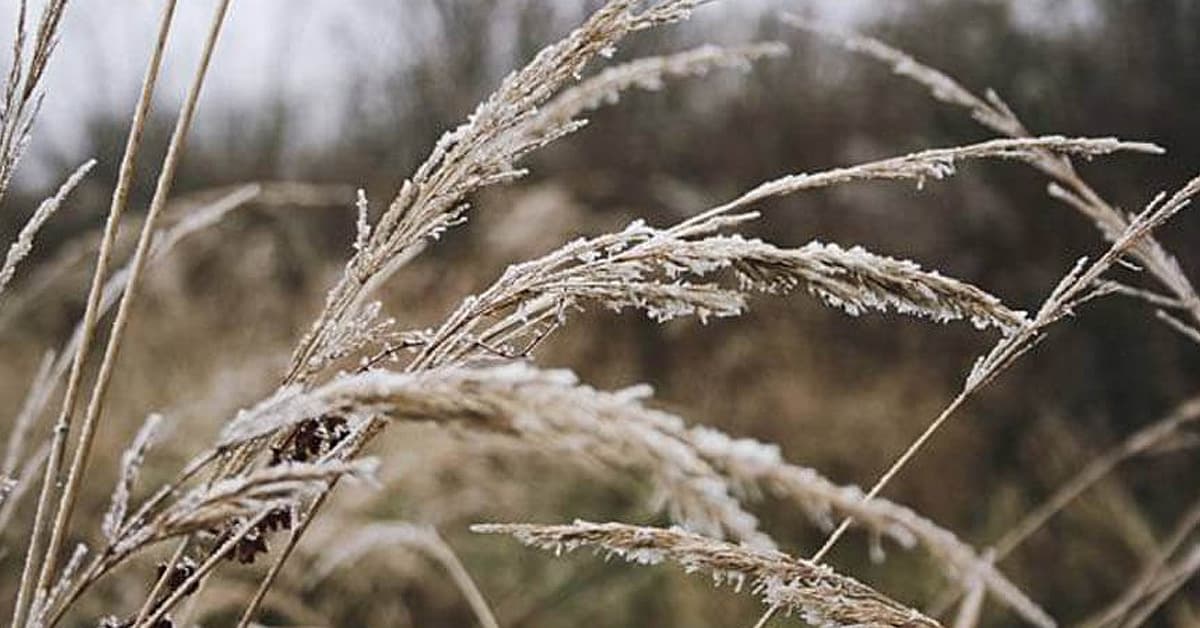At Farm FireSmart, Ag and Fire Services professionals provide guidance and support for local producers dealing with unharvested crops.
As the snow cover shrinks and spring approaches, many local producers find themselves with unharvested acres remaining in field. With the potential to delay spring seeding operations, producers must decide to salvage, harvest, or destroy this remaining crop.
Farm FireSmart asks producers to weigh all the options, and know what’s in your fields. Test overwintered crop to determine suitability, salvage value, and if the remaining crop is safe for human and/or animal consumption. Further information regarding available options can be found on the Alberta Agriculture and Forestry website or by calling 310-3276 (310-FARM).
Please contact your crop insurance provider prior to initiating any spring salvage, harvest or destruction activities.
If, after considering all options, burning the crop is determined by a producer to be the only available alternative, be aware there are standard practices and bylaws to consider.
BURNING CONSIDERATIONS
In Lac Ste. Anne County, a standard Fire Permit is always required prior to any burning activity. There may also be fire bans or restrictions in place, especially early in the spring. Please check albertafirebans.ca for any restrictions prior to making a burn plan. Smoke generated from burning can drastically affect air quality, with the potential to create health issues for those who may be susceptible. Poor visibility may also lead to traffic concerns and/or accidents. The impacts of burning can be far-reaching depending upon weather conditions.
PRE-PLANNING IS ESSENTIAL WHEN DECIDING TO BURN
Significant pre-planning must be in place prior to any crop burning activity. This is to be done for each case where there is an intent to burn. Use the illustration below for quick reference.

Cultivation must be completed around the perimeter of the burn area. It is recommended that this area be a minimum of 15 meters. Quadrant separation is recommended at 45 feet of cultivated ground. Discretion will be made based on lay of land. Extended cultivation up to 100 ft may be required upon inspection. Each individual fire pre-plan will be designed on a case by case basis. Lay of property, wooded areas, muskeg, peat moss and other variables, all need to be considered when developing your plan. Here are a few more recommendations:
- Divide the area to be burned into manageable sections
- Burn ONE section at a time. This will help keep the burn under control
- Fires must be lit leeward. Fires must be lit to burn against the wind, NOT with the wind
- Monitor wind and weather conditions diligently
- Be aware, conditions change very quickly
- Be sure to check for any potential restrictions
Fire Permits are Mandatory
Lac Ste. Anne County Fire Services reminds those who choose to destroy unharvested crops by burning, that a Fire Permit is required PRIOR to lighting any open fire at any time of year. Producers must adhere to the same standard recommended practice as is expected of anyone conducting burning activities within the County. Making the decision to light a fire without the proper documentation in place WILL result in penalties in accordance with the Lac Ste. Anne County Fire Bylaw.
The circumstances that have led local producers to consider burning crops as an option have been far from ideal. We understand the pressure and timeline constraints associated with this time of year.
Let's Work Together
Please contact your County's administrative office for any permit inquiries, questions or concerns. Additionally, producers are encouraged to contact Farm FireSmart for updates. and information.



